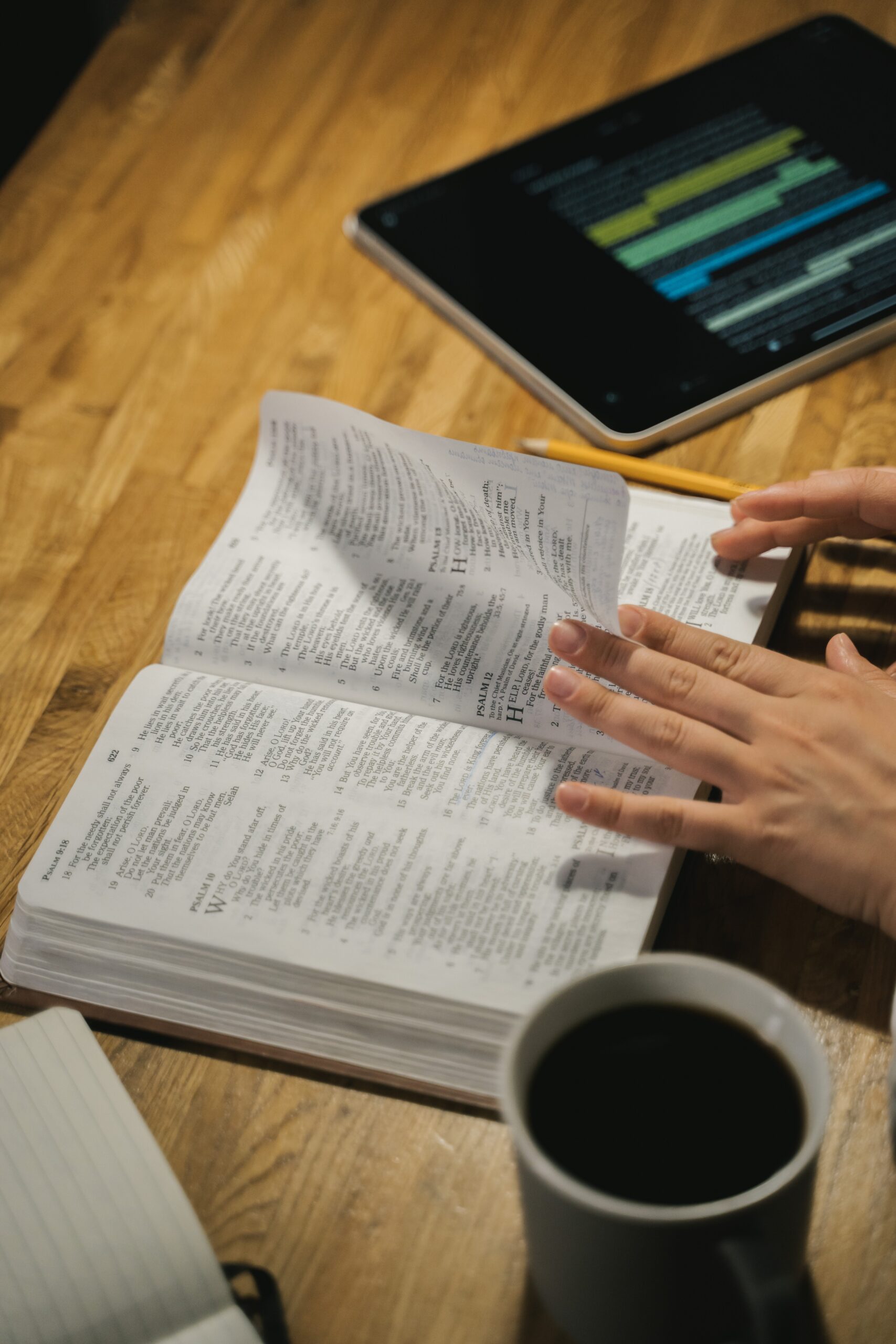This episode is the second episode in a II-Part Series on Discipleship. In the last episode, we talked about how the American church tends to get discipleship wrong. So what should it actually look like? In this episode, we dive into the practicals and how-tos of real discipleship.
Active Discipleship
In the last episode, we talked about the differences between active and passive discipleship.
Remember, active discipleship is the explicit, spiritual activities (like reading your Bibles, praying, or studying theology together). However, passive discipleship encompasses the things that people learn from you as you go about your life together.
But, what does this active discipleship look like?
Let’s say that you meet once a week for active discipleship. What should this look like? We love Cru’s three-thirds method (except, we change the order a little bit).
Look back:
There are four categories for looking back at your past week:
- Care: Check in on each other and ask how each other is doing. This is pretty easy for most people
- Why: You cannot overemphasize discussing why you are meeting together. This could be a focus verse. Set your “why” and regularly evaluate if you are accomplishing what you set out to do.
- Worship: This could look different! If you’re musically inclined, you could sing a worship song. But if not, you can find other ways to actively praise God.
- Loving Accountability: Check in on the goals you have set in the previous meeting!
Look up:
This is where we look to God. Looking up consists of Bible reading and practice. Whatever passage you are studying together, read it, break it down, and then practice what you are learning. For example, if you are reading the Great Commission, practice how you want to share the gospel with someone.
Look forward:
When we look forward, we look ahead to the future week.
One of the ways we do that is by setting “SMART” Goals:
- Specific
- Measurable
- Attainable
- Realistic
- Time-Oriented
You also share prayer requests and pray for each other.
If you don’t know where to start, this structure is great when it comes to discipleship.
Another big part of discipleship is accountability. If you haven’t listened to our episode on accountability, we highly encourage you to do so!

Passive Discipleship
So, what does passive discipleship look like? How do you demonstrate the gospel through how you live?
This could happen through having people over to your house, inviting them to go grocery shopping, watching kids together, etc… It looks different in different seasons!
AN IMPORTANT NOTE: It is inviting them INTO your rhythms, not attempting to host them or create rhythms for them. It’s not another thing to do, it’s doing the same things you normally do with an additional person.
For instance, if you have a Sabbath on Sunday afternoons with no phones, you may invite people over. You can explain that you Sabbath without technology on Sundays and they are welcome to participate or not. You are inviting them into your rhythms.
Your house doesn’t need to be spotless, you don’t need to keep people entertained, just invite them into your lives!
Think about Mary and Martha. People appreciate authenticity given the curated, individualistic society that we live in. It’s refreshing to see the parts of someone’s life that you normally wouldn’t see.
If you are playing basketball with someone and you get angry or upset, use that as an opportunity to talk through how you could have handled the situation better.
Confess your sins and weaknesses!
There are tiers of passive discipleship and confession can enhance that experience.
Another big way to passively disciple is by asking others how you can grow and where your blind spots are. Welcoming criticism and genuinely taking feedback can help them accept the same.
People are always observing you, the question is, what are they learning? That’s why having kids is an incredibly humbling experience. They observe and witness what we do and then implement it.
Should Discipleship be One-on-One or in Groups?
When you are laying out a formal discipleship group, should it be one-on-one, or should it be a group?
We’ve seen it done both ways well, but we lean towards doing discipleship in a group setting for a few reasons:
- Group discipleship is predominantly what we see in Scripture. Group settings allow it to be multiplicative instead of additive.
- You get less of a mentor vs mentee dynamic.
- You get more perspectives, more insight, and more people to talk about things with.
- For safety + accountability (especially when it comes to discipling youth, middle school, etc…) it makes it much easier to have groups.
One Degree Shift
Find someone to disciple you and someone that you can disciple (we think that groups are preferable). Maybe it doesn’t look like this mentor/peer relationship, but it just looks like a friendship group where all this takes place.
Want to Stay a Little Longer?
- Listen to these other episodes on what discipleship shouldn’t look like, accountability, and role models.
- Download this guide to get started on going deeper into reading your Bible!
- Subscribe to our weekly newsletter, we deliver one theological thought (among other things), once a week
- Follow along on Instagram for even more education, news, and fun!

+ show Comments
- Hide Comments
add a comment